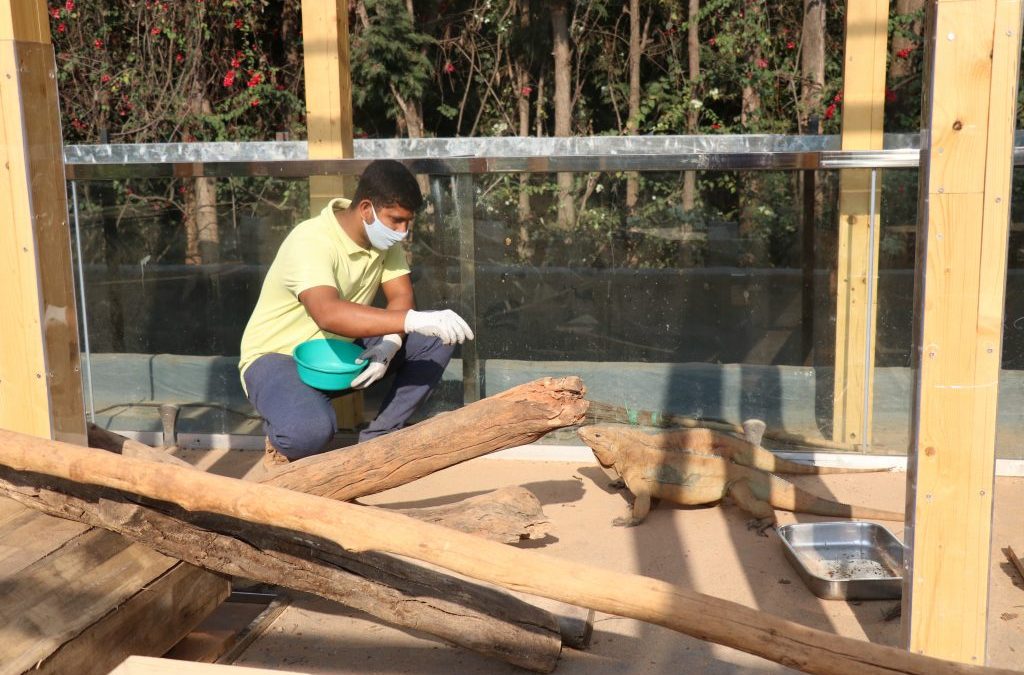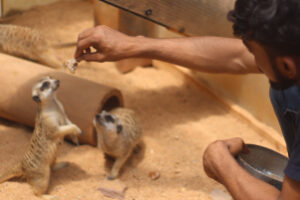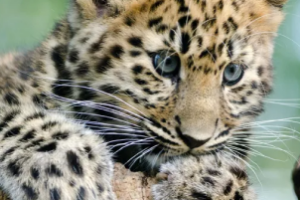
WHAT IS ANIMAL CARE AND MANAGEMENT?
BY R BHARATH :-
In its simplest form, animal welfare refers to the relationships people have with animals and the duty they have to assure that the animals under their care are treated humanely and responsibly. It can also be defined on the principle that an animal held in an enclosure show no signs of prolonged negative emotional states. In other words, it may refer to the animal’s physical and social environment which allows it a freedom in totality to express its full behavioral repertoire and maintain it’s homeostasis.
Despite its current popularity, interest in animal care and management is not a modern phenomenon. Concern for animal care and wellbeing has existed since domestication, which occurred at least 10,000 years ago in Neolithic times. Our appreciation and respect for animals led to their domestication, animal agriculture and animal husbandry, the branch of agriculture that deals with the care and breeding of animals. Many historians consider the development of agriculture to be the most important event in all of human history.
The animal welfare ethic that developed in the Neolithic era is one that obligated people to consider their animals’ welfare in order to achieve their own purposes. It set in place a mutually beneficial arrangement between people and animals that goes like this: If we take care of the animals, the animals will take care of us. In this ancient but enduring pact, self-interest demanded that people take good care of their animals. Amazingly, this very fundamental animal welfare ethic survives today, especially in settings where hands-on animal care continues. Today we call this special relationship the human-animal bond.
For centuries, pet farms and zoos have been working to increase the welfare of their animals by using ergonomic principles. And in the modern era, the concept of zoos or giving adequate care to animals in an enclosure has come a long way keeping into accounts the complete and total well-being of an animal, be it physiological or emotional. Animals in pet farms enjoys daily activities that satisfies its physical, physiological, and cognitive needs, which in concrete broader terms can be maintained by an increase in behavioral diversity, a reduction in the frequency of abnormal behaviors, and an increase in the positive and full use of the enclosure environment.
Principles of Animal Care and Management
Farmers, ranchers, animal trainers, animal scientists, dog and cat breeders, veterinarians, zoo keepers, and others who live and work with animals duly speak of the challenges and work within their professions, hobbies and how to address them. They evaluate individual animals for health and welfare indicators such as energy level, appetite, hair coat, brightness of eye and other signs. Use scientific methods to evaluate stress levels. When best practices are in place and the animals appear comfortable and healthy, the level of animal welfare provided is generally deemed acceptable. The following five principals are important for any animal care and management program.
The Five Freedoms:
- Freedom from Hunger and Thirst – by providing ready access to fresh water and a diet to maintain full health and vigour
- Freedom from Discomfort – by providing an appropriate environment including shelter and a comfortable resting area
- Freedom from Pain, Injury or Disease – by prevention or rapid diagnosis and treatment
- Freedom to Express Normal Behaviour – by providing sufficient space, proper facilities and company of the animal’s own kind
- Freedom from Fear and Distress – by ensuring conditions and treatment which avoid mental suffering
Taking evidence from the animal’s wild ecology (of its ancestors or free-living populations) and the mismatch (blue arrows) and biologically relevant (green arrows) aspects of care, and adapting husbandry and care regimes accordingly, it is possible to improve the mental health of pets and companion animals. For parrots, travelling over large distances and foraging using a diverse array of actions is not replicated by seed in a bowl but can be replicated with a feeding device that requires manipulation. For rabbits, a grazing species, physical and mental well-being is promoted by giving pet rabbits ad lib access to hay and restricted access to concentrate pellets. For goldfish, whose ancestors come from planted lakes and rivers, an artificial, unfiltered bowl reduces longevity and limits behavioural diversity, both of which are enhanced in a planted tank with a social and physically variable environment.
Food and Water
The basic needs for any animal to stay alive are food and water. Consequently, animals are to be provided with enough food and water to stay healthy. This means that the animal is fed with the right amount of food, resembling its natural diet and that clean drinking water is available at all times.
Water
Water has to be present at all times. To keep the water fresh keepers should empty, clean and refill the water buckets on a daily basis. When the enclosure has a moat to contain the animals in their enclosure, this could be used by the animals to drink. In this case, it is important to keep the water in the moat as fresh as possible. Preventing the water from standing still for long periods (make a stream flowing through the water), combined with emptying and cleaning the moat regularly will keep the water safe for the animals to drink and simply makes it look better.
Feeding
Most animals feed throughout the day. In the wild herbivores and omnivores spend most of their time feeding or looking for food/water. Most carnivores on the other hand need to hunt for prey and may not always succeed. The feeding regime in the captivity should be designed to resemble the way the animals would feed in the wild. In captivity the animals will have to be fed at a similar height, resembling their treetop feeding behavior in the wild. As another example, species with strong hierarchical structures cannot be fed by simply providing a single plate of food: dominant animals might claim the food and keep the lower ranking animals away from it. Spreading food items around the enclosure will improve the chance for every animal to get to the food. This is also a form of enrichment, the animals will spend more time looking for the food and are therefore kept busy for a longer period of time.
Diet
The diet that is fed to the animals should be as similar to the animals’ diet in the wild as possible. Each diet must find the balance between a starving animal and an over-fed animal. Every animal should be fed with more than one type of food: this way the animals have a more varied diet and are accustomed to several food items. This might come in handy when one type of food becomes unavailable for a while. Animals that are fed a balanced diet will stay healthier, have a higher reproductive rate and offspring will have a better chance of survival.
Suitable Environment
Housing animals in a well-designed enclosure is essential for their welfare. When designing or modifying an animal enclosure, the species it will hold and the way this species lives in the wild should be considered. One species may have totally different needs than the other. As mentioned one must determine the maximum number of animals that can be kept in an enclosure. When breeding, consider the maximum capacity of the enclosure so it will not become overcrowded.
Health Care
The animals in captivity should be provided with all necessary health care. There are several provisions which must be made to ensure both the physical and mental health of a captive animal: sanitization and control of disease, routine observation, quarantine and
veterinary care.
Importance of Animal Care and Management
What would the Ecosystem be like if all wild animals disappeared from the face of the earth? This means we would have to live in an Ecosystem where the remaining domestic animals can easily be destroyed by a virus attack. Imbalance in eco-system occurs due to the following reasons: poaching and hunting, death due to diseases, death due to poisoning, death due to natural hazards like earth quakes, habitat destruction due to multiple reasons (natural and man-made).
Hence, the wild animal species may become extinct in the course of time and it is a fact that many species of wild animals are in the stage of extinction if the management does not have a scientific type of management features. Hence, captive management becomes one of the important objectives.
For example, simple insects like bees play an important role during pollination. Without pollination, most of these plants would never be able to bear fruits. These fruits are the ones we depend on for nutrients and in maintaining a balanced diet, others are used for medicinal purposes and in large-scale commercial industries, these fruits are used in the production of. These are products consumed by humans and not the bees.
Animals played a pivotal role for successful development of human being as by research, medical, different industries, security and many more. People’s concerns about animal care and management are normally based on the idea that we should take steps to maximize the well-being of animals, especially wherever we use or interact with them. Improving our understanding of animal welfare, involves the fascinating study of animal behavior as well as the challenge of accessing the emotions of animals. It is the time now for thinking ourselves about animals, their role in human life, future with animals and survival of universe with animal.
And we are trying to do our bit at Life Science Education Trust. Here we ensure that each of our exotic’s physical, social, dietary, sensory, and cognitive mechanisms are well looked upon. We have made huge progress in terms of the size of enclosures or presence of structures and accessories to add a versatile value to the animal’s overall growth processes. And every day we are plunging into new measures to ensure that animals are properly cared for and the art is available to the ones interested in this field.
“The greatness of a nation and its moral progress can be judged by the way its animals are treated. I hold that the more helpless a creature the more entitled it is to protection by man from the cruelty of humankind.”




